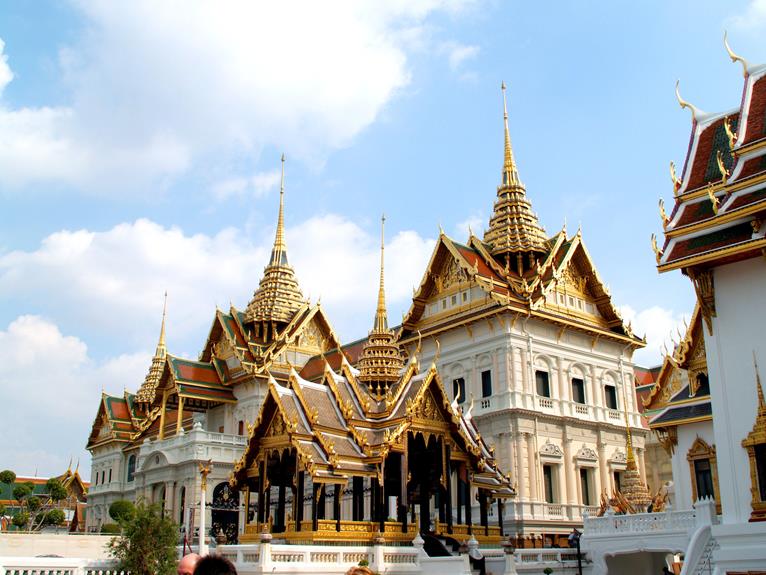Narail District, located in Bangladesh, is a region that exudes a rich historical tapestry and is home to numerous notable personalities. From its origins steeped in feudal lords and zamindars to its geographical positioning surrounded by several districts, Narail has a story waiting to be unfolded. This district not only boasts architectural marvels that reflect its intriguing past but also showcases a remarkable religious diversity. As we embark on this exploration of Narail's captivating history and extraordinary individuals, we will uncover the hidden gems and remarkable contributions that have shaped this land.
History and Geography of Narail
Narail District, located in the southern region of Bangladesh, boasts a rich history and a unique geography that has shaped its development over the years. The district covers an area of 990.23 square kilometers and is situated to the south of Magura District, north of Khulna District, east of Faridpur District and Gopalganj District, and west of Jessore District.
Narail's economic development has been influenced by its natural resources. The district is known for its fertile agricultural land, which contributes to its thriving agricultural sector. The district's main crops include rice, jute, sugarcane, and vegetables. Additionally, Narail is home to various small and medium-scale industries, including rice mills, jute mills, and garment factories. These industries provide employment opportunities and contribute to the district's economic growth.
Religious Diversity in Narail
The cultural fabric of Narail District is woven with a tapestry of religious diversity, as evidenced by the numerous mosques, temples, churches, tombs, and shrines that dot the landscape. The district is home to 1675 mosques, 248 temples, 51 churches, seven tombs, and 11 shrines, providing a vibrant religious atmosphere for its inhabitants. Religious festivals play a significant role in Narail, with communities coming together to celebrate occasions such as Eid-ul-Fitr, Durga Puja, Christmas, and Muharram. These festivals showcase the harmonious coexistence of different faiths, fostering interfaith harmony and mutual respect among the diverse religious communities in the district. The people of Narail take pride in their religious diversity, which adds to the rich cultural tapestry of the region and promotes unity and tolerance among its residents.
Administration and Governance of Narail District
The administration and governance of Narail District is overseen by various bodies and local authorities, ensuring efficient management and the smooth functioning of the district. The government structure in Narail District consists of the following:
- District Administration: The Deputy Commissioner (DC) is the chief administrative officer of the district, responsible for maintaining law and order and implementing government policies.
- Local Government Institutions: Narail District is divided into three upazilas, each with its own Upazila Nirbahi Officer (UNO) who oversees local government affairs. The district also has Narail Sadar and Kalia municipalities and 39 Union Parishads, which play a crucial role in local governance.
- Development Projects: The administration of Narail District is actively involved in implementing various development projects to improve the infrastructure, education, healthcare, and overall socio-economic conditions of the district. These projects aim to uplift the living standards of the people and promote sustainable development in the region.
Notable Educational Institutions in Narail
With a rich educational heritage, Narail District boasts several notable educational institutions that have played a significant role in shaping the intellectual landscape of the region. These institutions have been at the forefront of educational initiatives in Narail, providing quality education to students from all walks of life. One such institution is Narail Victoria College and Collegiate School, which was established in 1858 and continues to be a leading educational institution in the district. The impact of these educational institutions in Narail on the local community cannot be overstated. They have not only provided access to education but have also fostered a culture of learning and intellectual growth. Through their academic programs, extracurricular activities, and community outreach initiatives, these institutions have contributed to the overall development of the region and have produced many successful individuals who have gone on to make significant contributions in various fields.
Architectural Marvels of Narail
Narail District's rich educational heritage has not only fostered intellectual growth but also left a lasting legacy in the form of its architectural marvels. The heritage structures in Narail showcase the exquisite craftsmanship and artistic prowess of the region.
- Narail Palace: This grand mansion, one of the largest landlord mansions in Bengal, is a testament to the opulence and grandeur of the zamindar era. Its intricate carvings, elegant arches, and spacious courtyards mesmerize visitors.
- Kaalibaari Temple: Known for its architectural splendor, this temple is a prime example of traditional craftsmanship in Narail. Its ornate terracotta carvings, intricate designs, and vibrant colors make it a visual delight.
- Bandha Ghaat: Situated on the banks of the River Chitra, this ancient landing site is a reflection of Narail's historical significance. Its architectural elements, including the old pier, evoke a sense of nostalgia and transport visitors back in time.
These architectural marvels not only enrich Narail's heritage but also serve as a reminder of the region's rich cultural heritage and artistic legacy.
Prominent Personalities From Narail
In the district of Narail, a multitude of distinguished individuals have emerged, leaving an indelible mark on various fields and contributing to the cultural and intellectual landscape of the region. One such prominent personality is SM Sultan, a renowned artist known for his unique artistic style and contribution to the art scene in Bangladesh. Sultan's paintings reflect the cultural heritage of Narail and capture the essence of rural life in a captivating manner. Another notable figure is Shamoli Ray, a competitive archer who represented Bangladesh at the 2016 Summer Olympics. Ray's sporting achievements have not only brought recognition to Narail but also inspired aspiring athletes in the region. These individuals, along with many others, have played a significant role in shaping the cultural and sporting landscape of Narail, showcasing the district's rich heritage and talent.
Cultural Contributions of Narail's Personalities
One cannot overlook the profound impact that the distinguished personalities from Narail have had on the cultural landscape, as their artistic prowess and sporting achievements continue to shape the district's cultural contributions.
- The cultural influences of Narail's personalities can be seen in various forms, such as:
- Literature and Music: Renowned poet and baul singer Bijoy Sarkar has contributed immensely to the literary and musical heritage of Narail. His soulful compositions and lyrical expressions have resonated with audiences far and wide.
- Visual Arts: SM Sultan, a celebrated artist, has left an indelible mark on the art world with his captivating paintings that depict the essence of rural Bengal and the struggles of the common people.
- Sports: Shamoli Ray, a competitive archer, has represented Bangladesh at the 2016 Summer Olympics, bringing pride and recognition to the district through her exceptional sporting achievements.
These artistic achievements have not only enriched the cultural fabric of Narail but have also inspired future generations to explore and express their creativity.
Frequently Asked Questions
What Is the Current Population of Narail District?
The current population of Narail district is not provided in the given context. However, to analyze the population growth and demographic trends, it would be important to consider factors such as birth rates, death rates, migration patterns, and overall population trends over a specific period of time. This information can be obtained from government census data, which provides comprehensive statistics on population dynamics. By studying these trends, policymakers and researchers can better understand the population dynamics and plan for future development and resource allocation in Narail district.
What Are the Major Industries or Economic Activities in Narail?
Narail District is known for its major industries in agriculture and fish farming. The district's economy heavily relies on these sectors, which contribute significantly to its overall economic growth. Agriculture encompasses various crops, including rice, jute, vegetables, and fruits, while fish farming involves the breeding and cultivation of various freshwater fish species. These industries not only provide employment opportunities but also contribute to the district's food production and export potential, making them crucial for Narail's economic development.
Are There Any Famous Festivals or Events Celebrated in Narail?
Famous festivals and cultural events celebrated in Narail include the Narail Poush Mela, which showcases traditional music, dance, and crafts. The Mela attracts thousands of visitors from all over the country. The Narail Music Conference, held annually, brings together renowned musicians and enthusiasts to celebrate the rich musical heritage of the region. Additionally, the Narail Book Fair promotes literacy and cultural exchange through the display and sale of books by local and national authors. These events highlight the vibrant cultural scene of Narail and contribute to its reputation as a hub of artistic expression.
What Is the Transportation System Like in Narail District?
Public transportation in Narail District is facilitated by a well-developed road infrastructure. The district is connected to neighboring areas through a network of roads, allowing for ease of travel within and outside the district. Buses, minibusses, and rickshaws are commonly used modes of public transport. The road system is continuously maintained and upgraded to ensure smooth and efficient transportation for both residents and visitors. The availability of public transportation options contributes to the overall accessibility and connectivity of Narail District.
Is There Any Significant Natural Landmark or Tourist Attraction in Narail?
Narail District boasts several significant natural landmarks and tourist attractions that showcase its natural beauty and historical architecture. From the picturesque River Chitra, with its Bandha ghaat and scenic views, to the historic Kaalibaari and Shibmondir temples, visitors can immerse themselves in the district's rich cultural heritage. Additionally, the Narail Palace and Kalia Palace, both grand landlord mansions, offer a glimpse into the architectural marvels of the past. Overall, Narail District offers a unique blend of natural and historical attractions for tourists to explore and appreciate.





